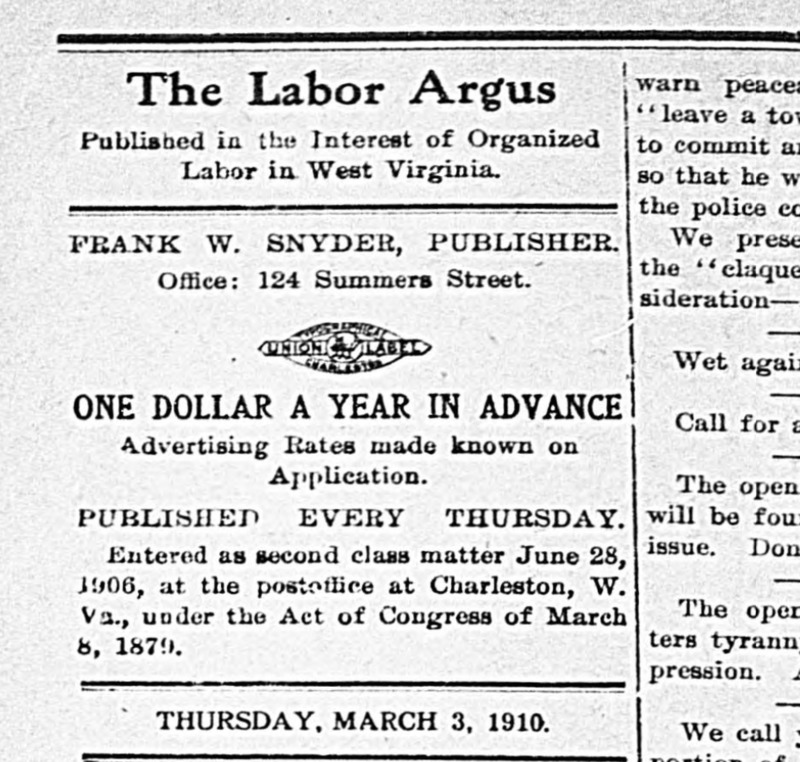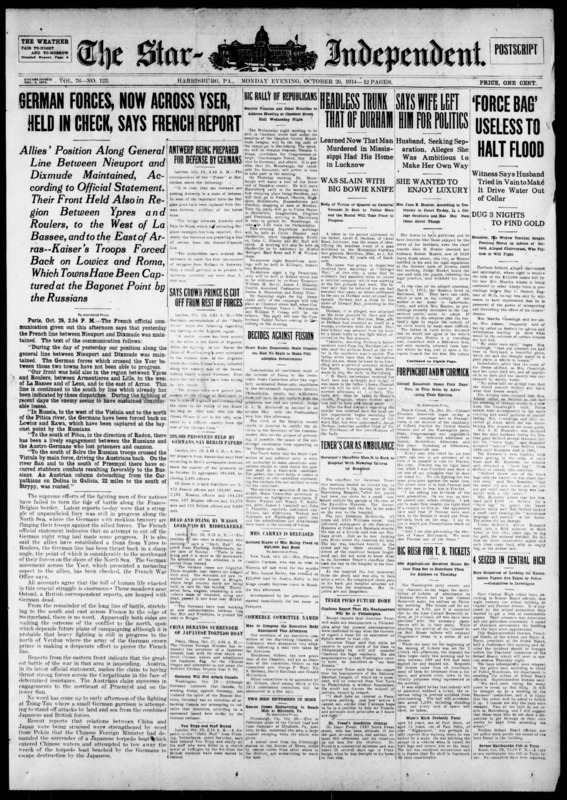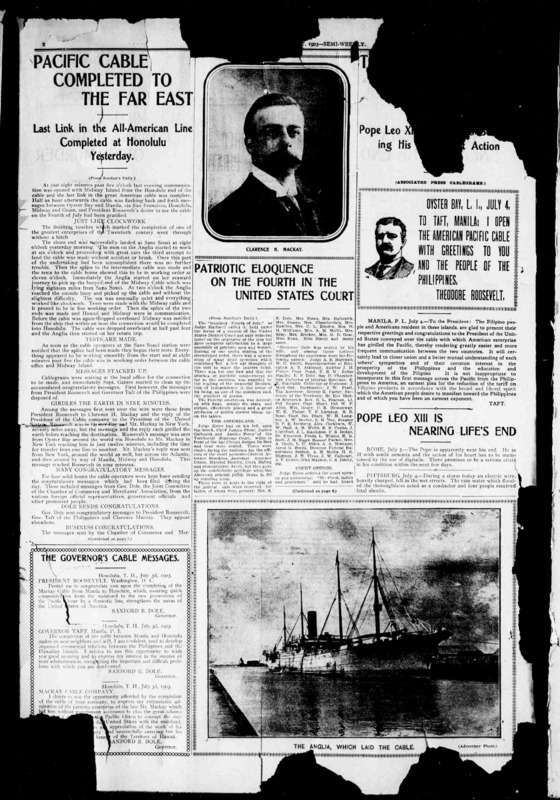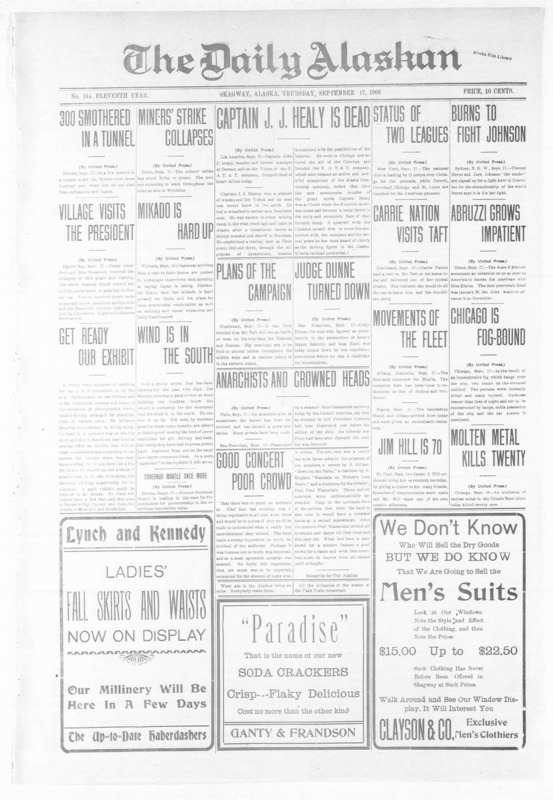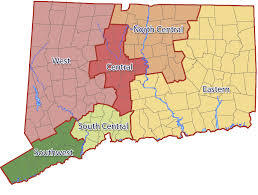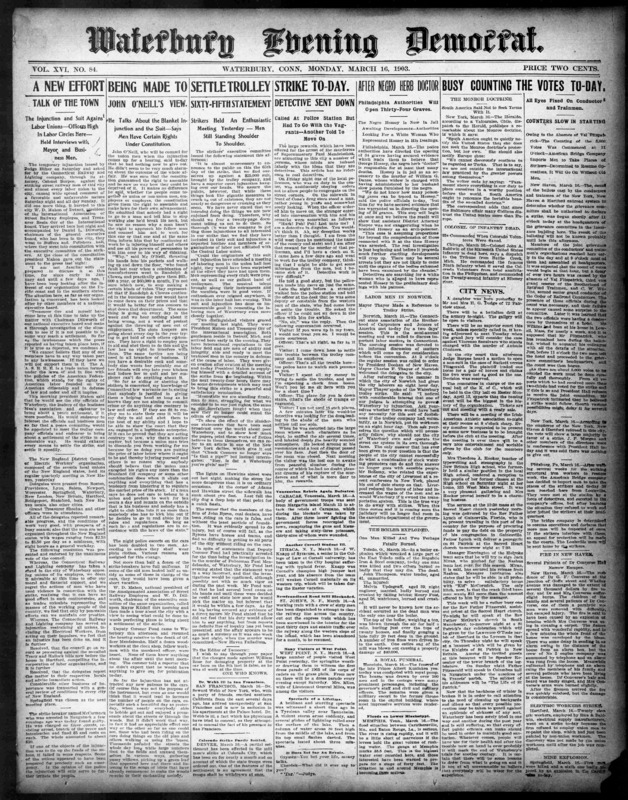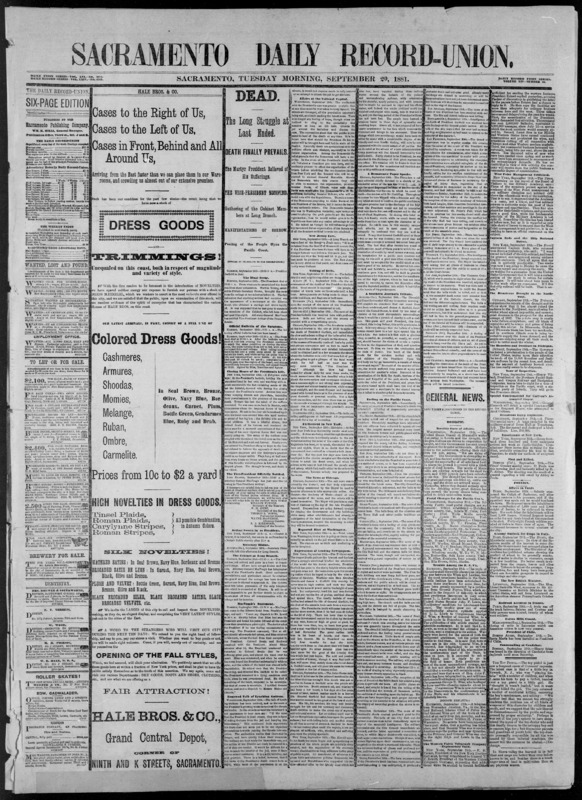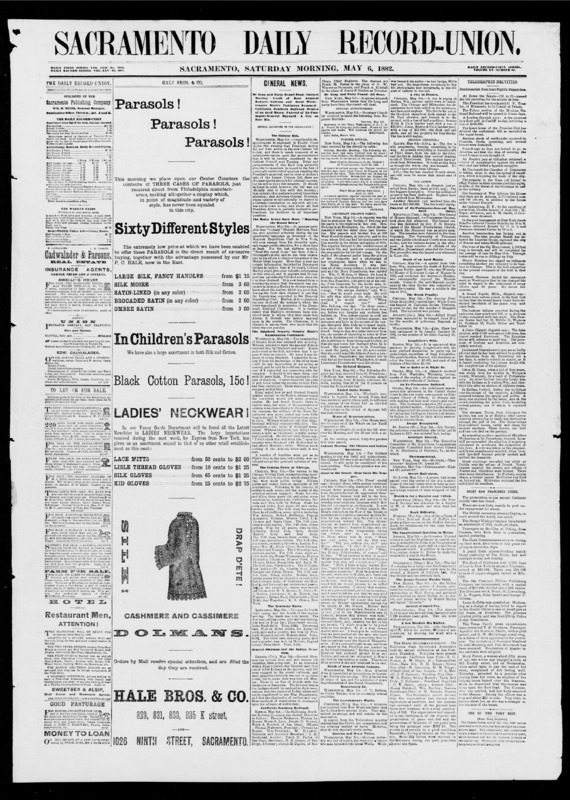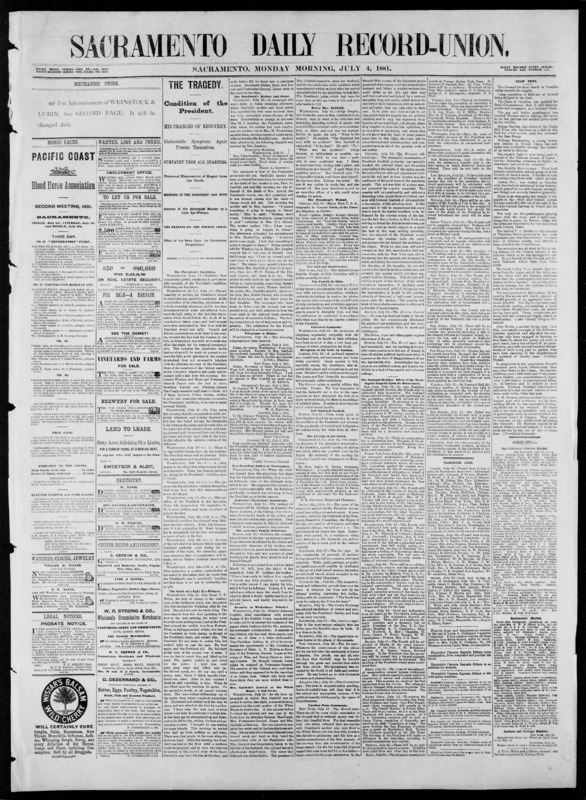Information Circulation
New South
The New South mainly published news about events that had happened, or were going to happen in Ellisville since it was a town paper. However, Shannon did not only publish events from town, but also events from surrounding towns that were also a part of Jones County in Mississippi. Also, there were sometimes stories published about events that had taken place in other states and even other countries. The most news stories that were published involved events from around Ellisville. There was often mention of specific names in the newspaper as if it was expected that everybody knew everybody and has to be informed when something happened, god or bad. Many of the stories that were published were short, almost no issue had any story that lasted a full page. Some stories were published were about what was going on with the Senate and Congress. There were a lot of stories about other states in America and major events that were taking place there as well. in a few issues other countries were mentioned or had their own sectional story about something that had happened there too. Much of the news that was published was similar to the news that is published in newspaper today, such as stories about horrific fires, punishing police (then called a sheriff), rewards for returning lost items, murders and killings, postponed meetings, etc. Overall, the New South published news stories from all over the world to inform their readers of major, and minor events, going on around them. By publishing a variety of stories, this ensured them to keep readers wanting more and keeping sales high.
James Shannon, T. J. Hardy and J. F. Parker received their published news from a variety of different sources. It was often advertised in the paper the wire and cable service that was used to gather information about events that had happened and also to send out information about events that took place in Ellisville. Also, in many of the issues, there is a small section that states work is done with dispatch. It is unclear who exactly dispatch is, but dispatch is usually someone who was sent out to a destination for an intended purpose or someone sent to deal with a problem quickly and efficiently. For the New South, dispatch was likely their version of reporters who would gather the information for them to publish in the paper. Another way of receiving news was by word of mouth of the general public. Some people would actually take the time to go and speak in person with the newspaper editor and publishers in order to get stories printed that they otherwise might not have heard about. Wire and cable services, dispatch workers and word of mouth by the general public allowed the New South staff to circulate information on an assortment of stories to the citizens of Ellisville, Mississippi not only from around the state, but from around the country and the world as well.

Information Circulation
This is another image of the front page of an issue from October 21, 1893. If you browse through this cover page, you can see a glimpse of the wide variety of stories that were published in each issue. For example, there are some stories about events that took place in the Senate, advertisements for schools and medicines, and stories that were reported in other newspapers around the world.
The Calumet News
The Calumet News mainly acquired their information from local things happening around town, but they received all of their national and international news from Boston. Many of the international information is about Boston or says “coming from our friends in Boston”. Boston was able to acquire information from Washinton D.C. and other large cities, then relay it back to Calumet, MI. How the information made it from Boston to Calumet is unknown, but with how quickly the news was being published into the paper, we can assume it was through wires and not on foot. The Calumet News would also report on information from surrounding states. News coming out of Washington D.C. would come second hand from Boston. One of the most popular sections of the newspaper was the reports of baseball games. The games would make the front page of the paper and you could read an in-depth description of each inning.
Another main attraction of the paper was a cartoon called “Doings of the Von Loons.” It was printed for the first time on January 23rd, 1911 and a new cartoon was published daily on the top of page seven. It was about the Von Loons family who would deal with issues similar to the audience who was reading the paper or funny issues. The cartoon was not only featured in The Calumet News but in other newspapers such as The Guthrie Daily Leader our of Guthrie, OK and Wheeling Sunday Register out of Wheeler West, VA.
did a good job of keeping their audience informed about information happening in the community and what was happening outside of it. Even as a daily paper, all eight pages would be filled with stories, sports, politics, local events, and advertisements. On days when there was not a lot of news to report on, they would make the ads bigger to fill the page. Since they were a daily newspaper, they did not have to worry about getting all the news they have received into one paper. They could save the story for the next day. Having this freedom gave them a chance to make the paper how they wanted and to put in fun community stories to bring everyone together. Since they are not publishing once a week, they need to fill up their papers. So, getting the community involved in the paper brings everyone closer.
The Labor Argus
The Labor Argus was a local based paper in Charleston, West Virginia and it served the Kanawha county. A lot of the pieces in this newspaper in this newspaper either talk about federal politics like the presidency, but a lot of the emphasis seems to be on West Virginian news. The most prominent West Virginian news to be reported had to be the talks between union and coal mining, as during the early 20th century in this region was very tense and hostile between the working class and the ownership class. The Labor Argus was discontinued in 1915, but it's office was merged with another paper, the Socialist and Labor Star, which was another paper based in West Virginia. It was recognized that since they were both socialist papers, with similar readerships, that merging would be benefical, so when they merged it went under a new name, the Argus Star. Charles Boswell was no longer the editor once this merger took place, as the editor of the other paper took over of the new merged paper.
The Star-Independent
The newspaper grabbed the attention from news around the United States. The front pages of the newspaper have a big article from New York in 1915 that talks about the "Reign of Terror in New York City" and the effects of that. They also had attention from 1914 international between France and Germany. More importantly, they had news coverage from all over. They had news regional, national and international. They were able to have news from World War I from places like Austria-Hungary, Russia, Great Britain and France. This was done by original reporting and being able to find pictures and do their reporting of how others were reporting of the news in other areas. During World War I, the reporters were able to find pictures of the Emperor of Austria- Hungary and his son, along with his wife and these pictures how the death of the Emperor and his wife the Duchess and showing how the throne will go to his son and that is where World War I begins. This is and was important to the newspaper and the for the company. This shows the readers in the newspaper about the things going on in a different country that had caused the beginning of the war.
The Hawaiian Gazette
The newspaper was published in Honolulu and focused mostly on the reports of government documents and provided a slightly biased commentary supporting the American sugar planters in the assembly and would occasionally provide a brief overview of current events in Europe among other places. However, after Whitney became the editor in 1873, the reporting of current affairs in Europe stopped and was replaced with laws that American plantation owners were attempting to pass in the legislative assembly. Most of the news from the Gazette came from the United States except for the government news and Hawaiian business ads. While there were some instances where local stories were written about by reporters, they are uncommon. After the United States annexation of Hawaii, as a territory in 1900, the Pacific Cable was built which was the first direct telegraph route from the United States to the Hawaiian Islands as well as the Philippines, China, and Japan, which shifted the method of information gathering greatly and increased the production and number of newspapers in Hawaii.
The Capital City Courier
The bulk of the Capital City Courier's news focused on local events, and thus the majority of reporting was local. A large portion of the paper involved individuals and groups within the Lincoln and Lancaster area reported activities through weekly or monthly bulletins, letters sent to the paper, word of mouth, by telephone, or through requests to the paper to publish local works by artists, poets, and musicians. However, there was a massive amount of demand from readers for information outside of the local area, Lincoln housed the only university in the state and the state government, so the demand for out-of-state news was substantial. To this end, the paper procured as much as they could from Chicago, New York, and international destinations, going so far as dedicating the full cover page towards the death of Queen Victoria, and her successor, Edward VII. Even though foreign events were notable throughout the paper, there still was a primary emphasis on local events. International information traveled from Europe into Canada or New York first through international, trans-Atlantic telegraph lines. Afterward, both international and national information would travel from the East coast to a major communications hub, commonly Chicago, before heading down to Omaha, and then the Nebraska capital city of Lincoln itself.
The telegraph lines within the United States followed many of the railroad lines, which ran literally straight through the Midwest. This was because it was cheaper to run a line next to a railroad as they already owned the land, but also made sense as railroads were typically built through major cities. Lines were built to Lincoln through Omaha because it was a stop along the way of Westward expansion, with countless pioneers stopping along the way. Lincoln was maintained as a major stop because it was chosen as the state capital in 1869, shortly after the Civil War. While it was the political and educational capital, it often vied financially and culturally with the largest city of Omaha, which was much more heavily connected with the outside world through its expanded train lines and the Missouri River.
The Daily Alaskan
An interesting thing about The Daily Alaskan was where it got the stories it published from. The answer was pretty much everywhere. Global news was what The Daily Alaskan was interested in, with the semi-frequent inclusion of local issues. Alaska, given its location geographically, meant that information and news got to the state only after a considerable amount of time. People would arrive on boats, and bring the most recent news with them. What that meant for the paper was that its stories would be relevant to residents but “old news” to someone who received the news relatively immediately.
How the newspaper got the news it published is a bit of a mystery, but from what we can glean from the articles, much of what was published was original reporting. The first words of every article not from Skagway were proceeded by the location of the news. Seattle and Washington to name a couple from the April 9th, 1917 issue. Anytime a story was published by another paper and copied to The Daily Alaskan, said paper would be named in parentheticals before the article. There were fifteen articles credited to United Press in the September 17, 1908 issue alone! The United Press was a wire service, in the “300 smothered in a tunnel,” “movements of the fleet,” and “Chicago is fog-bound” were just a few news stories presented in the aforementioned article. Stories from other states like Illinois and Delaware for example were brought to Skagway first from wire, then from ship. This is true also for news from entirely different countries, Japan being the most popular country The Daily Alaskan pulled from.
The Jersey City News
The Jersey City News got a large amount of its news from local cities such as New York City, Philadelphia and Boston. Another significant location that the newspaper reported about is Washington D.C., and many different stories appear involving politics in Washington that impact the rest of the country. As previously mentioned, The Jersey City News was very clear with their intention to be a demoncratic source of news, so this information from Washington D.C. typically slanted towards democratic viewpoints. In addition to articles written about current events in surrounding cities, the newspaper would also do shorter articles about information around the world. An example of this would be a front-page news story about a Greek ship being sunk by a British warship near Crete.
The Waterbury Democrat
The newspaper circulated around the Naugatuck Valley area of Connecticut. This is the south, central, and southwestern region of Connecticut, running along Interstate 84 and the Naugatuck River. It includes the New Haven area. This geographical area also includes the towns of Waterbury, Watertown, Middlebury, Oxford, Bristol, Thomaston, Plymouth, Cheshire, Prospect, and Shelton. These areas were significant for their industry and manufacturing plants. Some of these towns were mill towns, known for various factories. Therefore, the newspaper reflected ads for these types of companies and appealed to the people who worked at these places. It became known as the "people's paper" and daily circulation grew from 2,500 in 1893 to 4,581 in 1903.
The Waterbury Democrat received much of its news through original reporting because the newspaper was published in Waterbury itself and reported on Waterbury, and its neighboring towns. Therefore, people reporting for the newspaper were able to visit the areas in person and originally report about what was going on. People also came to the company to report their stories directly. For example, a group of railway strikers came to tell their story to the newspaper in January, 1903. On January 11, 1903, 80 Connecticut railway conductors and motormen went on strike in Waterbury due to the firing of 4 members of the Amalgated Association of Street Railway Employees. The strikers felt that the company's actions in firing the workers were an intentional attempt to damage the union. During the 210-day trolley strike, newspaper editorials and stories fully supported employees demands for a pay increase and asserted the peaceful nature of the strikers and admonished strikebreakers. This newspaper portrayed the issue between labor and management as management fault and it fully supported the workers. The intent was to turn public sentiment against company management. A few days after the strike occurred, the newspaper ran a story about the event, heavily defending the strikers and casting strike-crossers as traitors. The newspaper made its position in support of the union workers clear; this was not neutral reporting of the strike. Again, this story reflects the newspaper’s angle and bias in support of the democratic value of union labor.
The Oxford Democrat
Surprisingly, for such a rural location, the Oxford Democrat published a considerable amount of far-away news, foreign and domestic. Though, in comparison to more urban areas, it was still lack-luster at best. Much of the information the Oxford Democrat was (at least initially) received from Boston, Massachusetts, or otherwise Portland, Maine. As communication technology evolved and developed, the Oxford Democrat was able to receive information more directly (telegraphs, telephones, etc). As seen in the November 5, 1901 edition, the newspaper reported on information from all of the major cities across the United States. In the simply named ‘Here and There’ section, it reported on a statement from the President Roosevelt’s State of the Union Address: “It is announced that President Roosevelt’s forthcoming message to Congress will be short, and will be devoted simply to a general consideration of the state of the Union, and special treatment of a few important matters.” This proves that the Oxford Democrat collected information from across the country and of which pertained to out of the region.
The New-York Evening World
While the New York Evening World’s publishing center was located in Manhattan (New York City) New York, many issues took stories from across the United States and even other countries (for example, news produced about the Sino-Japanese War were sent from cities such as Yokohama, Japan). Some stories were sent in from Washington D.C and stories about the southwest were sent from Phoenix, Arizona and San Jose, California. For the stories related to events in New York, many of the articles were produced and published in Manhattan.
The Ocala Evening Star
The Ocala Evening Star Newspaper was mainly published in the town of Ocala Florida and the Marion County in Florida. The Newspaper circulated the County relatively fast for its weekly publications. Ocala Florida Marion County consisted of many towns which connected to larger cities inside the county and outside the county.
The Sacramento Daily Record Union
Although the main location focus of the paper’s publishings were Sacramento and surrounding Californian cities and towns, national news that affected the readers of the The Sacramento Daily Record Union was also published, along with the occasional foreign news update in bigger issues such as the yearly New Year’s Day reviews. Foreign nations covered by these large, up to twenty page, yearly reviews include England, France, Germany, Russia, Italy, Turkey, Austria, Spain, Belgium, South America, India, and Japan. The omission of China in the foreign coverage is surprising as California and to a lesser extent, Sacramento, had large populations of Chinese immigrants who worked mostly in mines and in railroad construction/maintenance. Local Sacramento news and other Californian state stories were reported by the paper’s own reporters.
National news had to have used wired services like the telegraph or possibly even the telephone in order to arrive in Sacramento to be reported in a timely manner, usually stories were published the same day they happened, but occasionally would take a day or two to be published. The speed in which the paper received national news is evident in the report of the passing of the Chinese Exclusion Act, which was reported on the very same day it was passed, being May 6th, 1882. The report of President Garfield being shot was published two days after it had happened on July 4th of 1881. Additionally the article on President Garfield’s eventual death on September 20th, 1881 was reported in The Sacramento Daily Record Union just a day after it had happened.


